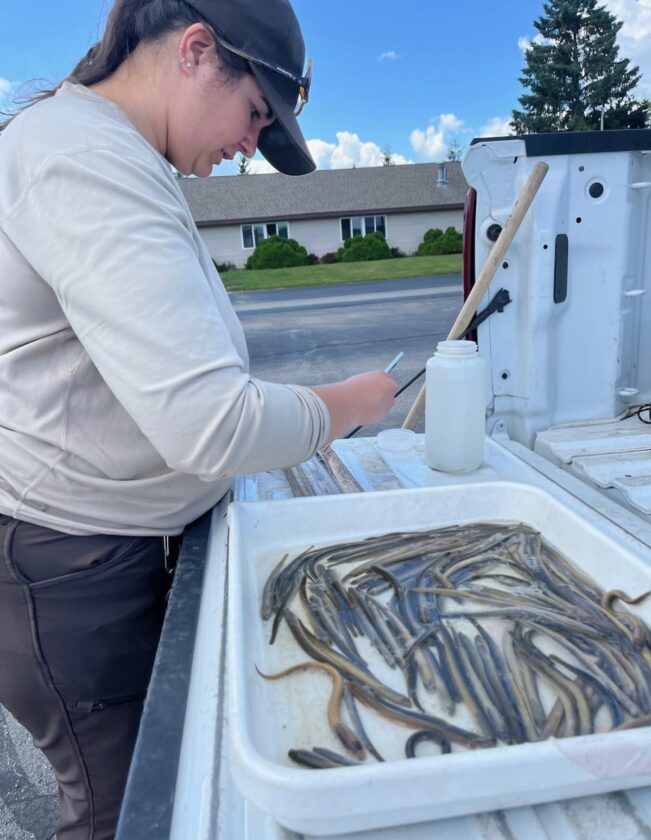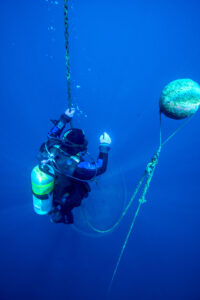Sea lamprey management at Devil’s Lake

Courtesy Photo by U.S. Fish and Wildlife Service Technician Callie Kopp is seen measuring sea lamprey larvae collected from Devil’s Lake in July.
ALPENA — Sea lamprey management efforts will occur offshore of Devil’s Lake in Alpena County next month.
According to a recent U.S. Fish and Wildlife Service press release, personnel will begin applying lampricides to an area of Devil’s Lake to kill sea lamprey larvae burrowed in the lake bottom.
The release states personnel will conduct these lamprey management efforts between Oct. 7 and Oct. 16 “in accordance with State of Michigan permits.” The department added the application dates are tentative and will be dependent on weather or stream conditions.
Sea lamprey larvae live in hundreds of Great Lakes tributaries, according to the release. The lamprey transform to parasites and migrate to the Great Lakes, killing fish by feeding on their blood and body fluids.
“Failure to kill sea lamprey larvae in streams will result in significant damage to the Great Lakes fishery,” the press release states. “Infested areas offshore of some tributaries must be treated on a regular basis with lampricides to control sea lamprey populations.”
The department explains that the U. S. Environmental Protection Agency (EPA) and Health Canada Pest Management Regulatory Agency (PMRA) have “reviewed human health and environmental safety data for lampricides.”
The release states that in 2003 the EPA and PMRA concluded that the lampricides — which include Lampricide and Bayluscide — are not significant threats to the public and environment. The department states the lampricides “pose no unreasonable risk to the general population and the environment when applied at concentrations necessary to control larval sea lampreys.”
Christopher Eilers, U.S. Fish and Wildlife Service supervisory fish biologist, told The News that the type of lampricide personnel will apply at the inlet of Devil’s Lake, near where it connects with Long Lake Creek, is a granular form.
“The granular form will sink to the bottom of the lake and disperse,” Eilers said.
Eilers added that there is no need for the public to be concerned about exposure.
The U.S. Fish and Wildlife Service adds that the public should “use discretion and minimize unnecessary exposure.”
“Lampricides are selectively toxic to sea lampreys, but a few fish, insect, and broadleaf plants are sensitive,” the release states. “Persons confining bait fish or other organisms in stream water are advised to use an alternate water source because lampricides may cause mortality among aquatic organisms stressed by crowding and handling.”
According to Eilers, personnel began application of lampricide in this area of Devil’s Lake in July but were not able to complete the project. Eilers explained the U.S. Fish and Wildlife Service is returning to Devil’s Lake to complete that work.
Kayla Wikaryasz can be reached at 989-358-5688 or kwikaryasz@TheAlpenaNews.com.




